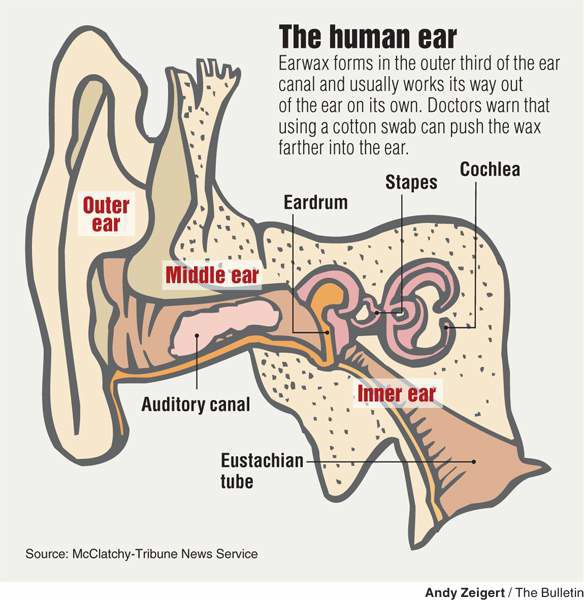Hear ye! Hear ye!
Published 5:00 am Thursday, September 25, 2008

- Hear ye! Hear ye!
Every day millions of Americans pick up their trusty cotton swab and dutifully clean out the wax from their ears, unaware they’re probably making the problem worse.
According to the first-ever professional guidelines regarding earwax, published by the American Academy of Otolaryngology last month, nobody should use cotton swabs or ear candles to try to remove earwax.
“Unfortunately, many people feel the need to manually remove earwax, called cerumen, which serves an important protective function for the ear,” said Dr. Peter Roland, chairman of otolaryngology, head and neck surgery, at the University of Texas Southwestern Medical Center and lead author of the guidelines.
“Cotton swabs and some other home remedies can push cerumen further into the canal, potentially foiling the natural removal process and instead cause buildup.”
Ears are actually self-cleaning, Roland said. Any excessive earwax normally migrates out of the ear canal automatically, assisted by the chewing motion of the jaw. It carries with it dirt, dust and other small particles.
Cerumen is not really a wax but a water-soluble mixture of secretions, hair and dead skin. It’s a natural product that serves a protective function, serving as a lubricant and an antibacterial. It shouldn’t be routinely removed, doctors say, unless it’s impacted. When buildup blocks off more than 80 percent of the ear canal, it can affect hearing.
“When cerumen builds to the point of causing symptoms such as pain, ringing, itching or hearing problems, it’s a sign you should see a physician,” Roland said.
The problem affects about one in 10 children and one in 20 adults, but more than one-third of the elderly and cognitive-impaired. The guidelines recommend that physicians should pay close attention to earwax buildup in patients with hearing aids, who are at higher risk for impaction.
Dr. Stuart Garrett, a family practice doctor at Bend Memorial Clinic, said he sees patients with problem earwax just about every day.
“It’s a real problem for a lot of people,” he said. “People who wear earplugs have more problems with it, (also) people who have a lot of hair in their ears, and some people who have really narrow ear canals, or they’re crooked or have a curve in them.”
Garrett said people who have trouble with earwax buildup should use special drops that can be purchased without a prescription to clean out earwax every six to 12 months. But he said many people don’t use the drops correctly.
“You’ve really got to tilt your head, put two or three drops in there, and wait at least a couple of minutes so the fluid can go down and get into the wax,” Garrett said. “Most people put a drop in and stand up, and it falls right out.”
If the drops don’t help, it may be time to see a doctor, he said.
The guidelines recommend doctors use wax-dissolving agents or irrigation with a syringe to remove impacted earwax. Doctors can also use special instruments or a suction device to remove blockages.
“I would say 90 percent of people can do it on their own,” Garrett said. “And then they don’t have to pay a physician a couple of hundred bucks to get it out.”
The guidelines strongly warned against patients inserting anything into their own ears. Earwax isn’t created deep in the ear anyway. It’s produced by the outer third of the ear. So most home remedies wind up pushing the earwax deeper into the ear. Doctors recommend cleaning the outside of the ear only with a cloth.
“I usually recommend people not go inside the ear canal at all,” Garrett said. “It’s hard to see what’s there and there could be wax pretty far down the canal, and they could push it back in.”






